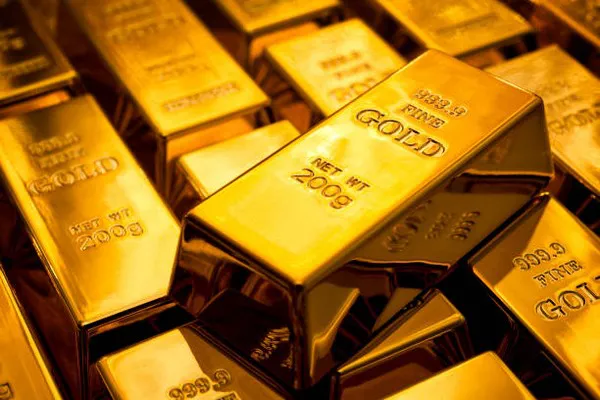Gold has always held a unique position in the global economy, serving as both a store of value and a hedge against inflation. Understanding its historical price movements can provide valuable insights into market trends and economic conditions. This article focuses on the price of gold in 1971, a pivotal year that marked significant changes in the financial landscape, particularly the end of the Bretton Woods system.
The Economic Context of 1971
The Bretton Woods System
To understand the price of gold in 1971, we must first explore the Bretton Woods system, established in 1944. This system fixed exchange rates between currencies and tied the U.S. dollar to gold, making the dollar the world’s primary reserve currency. Under this system, the price of gold was set at $35 per ounce.
Economic Challenges
By the late 1960s and early 1970s, several economic challenges began to surface:
Inflation: The U.S. faced rising inflation rates, partly due to increased government spending on the Vietnam War and social programs.
Trade Deficits: The U.S. began running trade deficits, leading to a depletion of gold reserves as countries exchanged dollars for gold.
Currency Pressures: As confidence in the dollar waned, countries started demanding gold in exchange for their dollar reserves, putting further pressure on U.S. gold reserves.
The Price of Gold in 1971
Fluctuations Throughout the Year
In 1971, the price of gold experienced significant fluctuations, reflecting the tensions in the global financial system:
January: Gold prices remained relatively stable at around $35 per ounce, consistent with the Bretton Woods system.
March: As inflation continued to rise, the demand for gold increased. Prices began to creep up slightly, reaching around $36 per ounce.
May: The price of gold continued its upward trajectory, influenced by growing uncertainties in the economy. Prices reached approximately $37 per ounce.
August: By mid-August, gold prices surged to around $40 per ounce as investors sought safety in gold amidst increasing economic instability.
The Historic Announcement
On August 15, 1971, President Richard Nixon announced significant changes to the U.S. monetary policy, including the suspension of the dollar’s convertibility into gold. This pivotal decision effectively ended the Bretton Woods system and allowed the dollar to float freely against other currencies.
Immediate Impact on Gold Prices: Following Nixon’s announcement, gold prices skyrocketed. The price jumped to around $44 per ounce by the end of August, reflecting the panic and uncertainty in the market.
Year-End Price
By the end of 1971, gold prices had stabilized somewhat but remained elevated due to ongoing economic concerns. The closing price for gold was approximately $40.62 per ounce, marking a significant increase from the previous year.
Factors Influencing Gold Prices in 1971
Inflation and Economic Instability
The rising inflation rates during this period played a crucial role in driving up gold prices. As the value of the dollar declined, investors turned to gold as a hedge against inflation.
Geopolitical Tensions
The geopolitical climate, including the Vietnam War and other international conflicts, contributed to global uncertainty. Investors often flock to gold in times of geopolitical strife, further elevating its price.
Speculation and Market Psychology
Investor sentiment and speculation about future economic conditions also influenced gold prices. As more people sought the safety of gold, demand surged, driving prices higher.
The Transition to a Floating Exchange Rate System
Implications of Nixon’s Announcement
Nixon’s announcement had far-reaching implications for the global economy. The shift to a floating exchange rate system marked the end of fixed exchange rates and set the stage for a more volatile currency market.
Impact on Gold Prices Post-1971
After 1971, gold prices continued to rise dramatically throughout the 1970s, peaking in 1980 at over $800 per ounce. The initial price movements in 1971 were a precursor to this significant upward trend.
Comparison with Subsequent Years
Gold Prices in the 1970s
Following the changes in 1971, gold prices experienced substantial growth:
1972: Prices averaged around $58 per ounce.
1973: Prices increased to approximately $97 per ounce.
1974: Gold prices soared to about $154 per ounce.
Long-Term Trends
The price of gold continued to rise throughout the decade, influenced by ongoing inflation, economic uncertainty, and increasing demand for the metal as an investment.
Conclusion
The price of gold in 1971 was not just a reflection of market dynamics but also a sign of the seismic shifts taking place in the global economy. The end of the Bretton Woods system and the transition to a floating exchange rate regime marked a pivotal moment in financial history. Understanding the context and fluctuations of gold prices during this time provides valuable insights into the complexities of economic systems and the enduring appeal of gold as a safe-haven asset. As we look at today’s market, the lessons learned from 1971 continue to resonate, reminding investors of the significance of gold in times of uncertainty.
You Might Be Interested In
- What is Gold Price in UK Today(October 21)
- What is the Price of Gold in India Today (October 21)
- What is The Spot Gold Price Today(October 21)


